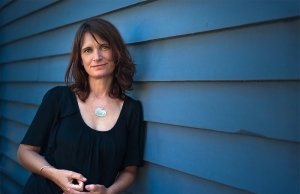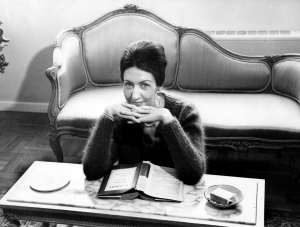Archive
Peter Pierce reviews 'Documents that Shaped Australia: Records of a nation’s heritage' by John Thompson
For many undergraduate students of Australian history in the 1960s (when there were still plenty of them), the set text was not a narrative history but Manning Clark’s Select Documents in Australian History (1950, 1955). Dry but fascinating, the documents covered the period from 1788–1900. First published more than a decade before the opening volume of Clark’s A History of Australia, here were the bones of the research for that work. In his introduction to Documents That Shaped Australia: Records of a Nation’s Heritage, John Thompson acknowledges Clark and Frank Crowley’s Modern Australia in Documents (1973). He has, however, done something different. This book has a smaller number of items than its predecessors, but it is attractively and extensively illustrated (usually, but not always, with photographs of the documents). No doubt Thompson’s publisher, Pier 9, thought of school library sales for the book. It is a hope that deserves to be rewarded.
... (read more)Patrick Allington reviews 'Every Secret Thing' by Marie Munkara
From its opening line – ‘It had been a shit of a day for Sister Annunciata and Sister Clavie’ – Marie Munkara’s collection of stories about life on an island mission in northern Australia is a raw, hilarious and penetrating chronicle. The two nuns stare at the sky waiting for the bishop. His plane overshoots the airstrip and lands with a ‘resounding crump’. It is as if the bishop – ‘his Most Handsome and his Most Distinguished’ or ‘his Most Sleazy’, depending on which nun you ask – represents wave after wave of invasion. Apart from God and His earthly representatives, the islanders over the years also confront an anthropologist, Indonesians, a naked French couple, Spanish workers, marijuana, rum, the flu and even John Wayne.
... (read more)A Confederacy of Dunces always makes me laugh. The book I’ve read the most number of times is a collection of essays about animals and insects called The Red Hourglass, by Gordon Grice.
... (read more)It is a critical truism, if not a cliché, that poetry estranges: it makes things strange, so that we can see the world and ourselves afresh. Defamiliarisation, the uncanny, even metaphor, are all fundamental to poetry’s estranging power. Unsurprisingly, madness, vision and love have also long been poetry’s intimates, each involving the radical reformation – or deformation – of ‘normal’ ways of seeing the world. One might describe poetry as surprisingly antisocial, since poets have from ancient times been associated with social isolation, distance or elevation, as well as with madness.
... (read more)Rhyll McMaster reviews 'The Second-Last Woman in England' by Maggie Joel
There are a number of strands at play in this curiously titled novel set in postwar London in the Coronation year, 1953. The well-to-do Mrs Harriet Wallis, convicted of the murder of her husband, Cecil, becomes the second-last woman in England to be hanged. The last woman to be executed for murder in England was Ruth Ellis, about whom Mike Newell made the film Dance with a Stranger (1985), with Miranda Richardson as Ellis.
... (read more)John Byron reviews 'Resourceful Reading: The New Empiricism, eResearch, and Australian Literary Culture' edited by Katherine Bode and Robert Dixon
A quiet revolution has been occurring within the humanities over the last decade: the emergence into mainstream scholarship of new methods and approaches that exploit digital tools, electronic infrastructures, networks of data resources and the sheer computational power of modern technology. This renaissance builds on decades of pioneering work – well before its time and largely unacknowledged – performed by committed visionaries who perceived the possibilities for textual scholarship years before desktop computers and the Internet enabled the rest of us to see how our research could be informed, assisted, extended and even revolutionised by new technologies.
... (read more)Lost children appear (or disappear) everywhere in literature and film: in Alice Sebold’s The Lovely Bones (2002) and Clint Eastwood’s Changeling (2008). Wendy James’s new novel, Where Have You Been?, concerns a lost teenager, and Carmel Bird’s Child of the Twilight (which I reviewed in last month’s ABR) explores the mythic status of the lost child. However, Stephen Orr’s novel Time’s Long Ruin goes to the harrowing core of one of the most disturbing mysteries in twentieth-century Australia – the disappearance of the Beaumont children.
... (read more)Susan Gorgioski reviews 'Once on a Road' by Mary-Ellen Mullane
Packaging and promotion have always been formidable tools in the marketplace. Once on a Road is poorly served by its sensational back cover blurb, ‘How far would you go to protect your grandchildren from their mother?’ No, this is not a new Stephen King novel, nor is it literary fiction, as its imprint would lead readers to believe.
... (read more)'In more than one place': Cosmopolitanism in the work of Shirley Hazzard
In October 2009, Shirley Hazzard spoke at the New York launch of the Macquarie PEN Anthology of Australian Literature. Hazzard read from People in Glass Houses, her early collection of satirical stories about the UN bureaucracy. Her appearance serves to remind Australian readers that Hazzard continues to occupy a defining, if somewhat attenuated, place within the expansive field of what Nicholas Jose described in 2008, on taking up the annual Harvard Chair of Australian Studies, as ‘writing that engage[s] us with the international arena from the Australian perspective’. Jose went on to cite Hazzard’s most recent novel, The Great Fire (2003), as part of ‘a range of material which Americans would not necessarily think of as Australian’.
... (read more)Brian McFarlane reviews 'Changing Stations: The story of Australian commercial radio' by Bridget Griffen-Foley
Having cut my narrative teeth on Dad and Dave and Martin’s Corner (and my critical molars on the Listener-In), I had high expectations of this book. Night after childhood night, I would wait agog for Wrigley’s Chewing Gum and a burst of rowdy music to usher in the outback doings of Dad and his hayseed family. Martin’s Corner, on the other hand, was brought to our living room by Kellogg’s Corn Flakes, which, we were assured, would ‘provide the essential bulk or roughage your system needs to keep it functioning healthily and regularly’. I didn’t know what this meant, but, such was the persuasive power of commercial radio, I believed it. Just as I believed from Sunday-night listening to the Lux Radio Theatre that ‘nine out of ten Hollywood stars used Lux for their daily active lather facials’, though I did wonder about the arid pores of that misguided ‘tenth’ star. The ABC was there for the news, but it was 3LK for entertainment, including such taxing intellectual games as Quiz Kids and Bob Dyer’s Pick-a-Box.
... (read more)









